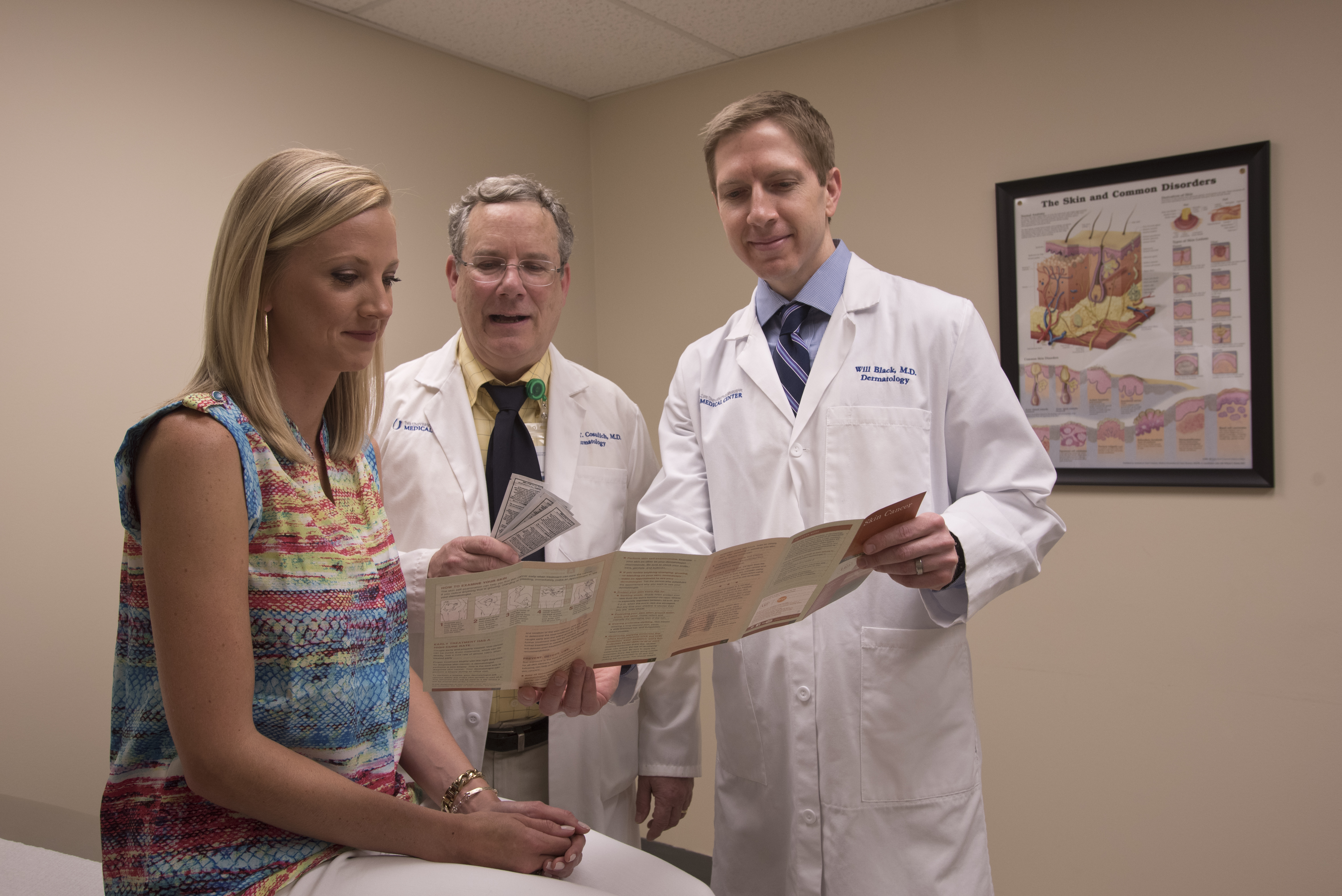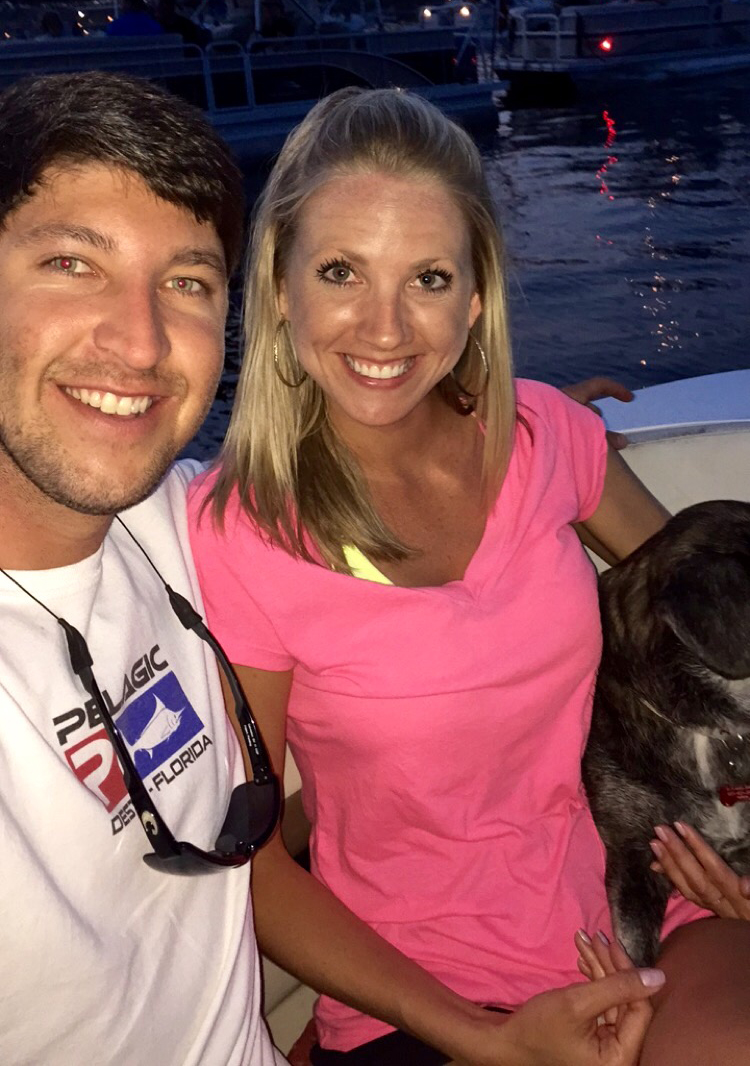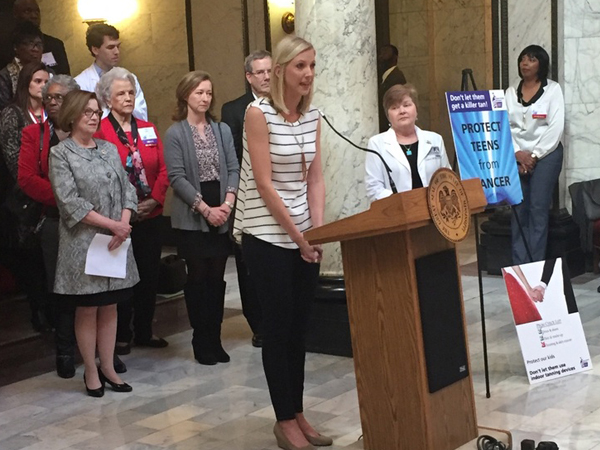Tan not worth melanoma, survivor says

About a year ago, Emily Tandy of Flowood discovered years of tanning delivered a life-threatening reminder: melanoma.
Today, she tells anyone who will listen to avoid tanning beds, to use sunscreen and to regularly check their bodies for skin cancer.
“I'm pale and I'm proud of it,” she said. “I'd rather be pale and alive than tan and dead any day.”
Her serious tanning habit started at 17 when she got a job at a tanning salon. In the 18 or so months she worked there, she said she probably tanned three times a week. “Then I'd lay out with friends on the weekend,” she said, rarely using sunscreen and brushing off her Mom's advice to cut back on the activity. “I did all that stupid stuff.”
College dampened her sunbathing time to “maybe three to four times a month.”
At 26, after she'd watched the middle of a freckle on her upper right thigh slowly darken over the previous year, she said she told her Mom, “This doesn't look right.”
This time, she took her mother's advice to have it checked out.

Dr. Robert Brodell found the freckle had only one of the ABCD features of melanoma: “E” or evolution. The mole was changing. Brodell, professor and chair of the UMMC Department of Dermatology, said he looks for the ABCDs to spot melanoma.
Tandy's mole didn't have “A” or asymmetry; “B,” irregular borders; “C,” color variegation; or “D,” diameter bigger than a pencil eraser.
A biopsy confirmed Tandy's fear. This was melanoma. Soon she was seeing Dr. William Black to have it removed.
“For an early one like that, it was pretty straight forward,” Black said of the procedure done in his offices. Now Tandy sees him regularly and has had another suspicious mole removed from her back. It was benign.
Most patients who have had a recent melanoma see their doctor every three to six months for a full skin scan, said Black, assistant professor of dermatology.
“There's a higher risk of recurrence or having a new melanoma in the first couple of years,” he said.
After a couple of years the time between exams may lengthen. “Anyone who has had a melanoma needs a full skin exam annually, pretty much for the rest of their lives,” he said.
Today, Tandy uses self tanners for special occasions and will talk to anyone if she can prevent them from following her path.
Legislators? Yes. This past year, she told her story to any who would listen as the American Cancer Society sought passage of a bill to forbid those under age 18 from using tanning beds without parental permission.
Friends? Absolutely.
Strangers? You bet. Recently while having her nails done, another customer arrived with sunburn and bemoaning her fate. “I just told her, 'Take it from me. I've had skin cancer. It's not worth it,'” Tandy said.

“My mom would just plead with me,” she said of her teen-age self. “My dad would always say 'Pale is beautiful.'”
Brodell, too, emphasizes Tandy's message. As a dermatologist he sees an increasing number of young people with melanoma.
And, the numbers are growing. Tandy, he said, has done well in curbing her urge to tan. Many others “do well for a few months, then relapse.”
Women often are more willing to take precautions to avoid wrinkles than to prevent skin cancers, he said. “Men are hopeless, they need a wife to tell them to take precautions never thinking anything will happen to them,” he said.
“The tendency to deny the possibility it could be you is very powerful,” he said.
“People in Mississippi are particularly susceptible to the hazards of the sun,” he said. “We work outside, play outside in the setting of a tropical sun. We also are risk takers. Spending a lot of time unprotected in the sun or going to the tanning parlor absolutely will increase the risk of pre-cancerous actinic keratosis, basal cell carcinoma, squamous cell carcinoma and melanoma.”
For many, like Tandy, who see a change in a freckle, mole or their skin, the simple process of asking their family doctor or a dermatologist to look at it may be a life saver.
While Brodell's job is to help people detect and treat cancer, his priority is encouraging them avoid it. He offers the same tips promoted nationally by the American Academy of Dermatology.
Skin cancer occurs more often in people with light hair, eyes and complexions and who do not tan easily. Darker-skinned people may still get skin cancers and should be alert for melanoma, particularly on the palms of their hands, soles of their feet and in their mouth.
Brodell offers these tips for lowering skin cancer risk:
- Wear broad-brimmed hats.
- Stay in the shade from 10 a.m. to 2 p.m. when ultraviolent rays are strongest.
- Wear sun screens with sun protection factors of SPF 30 or higher, also labeled broad spectrum UVA-UVB blockers.
- Reapply sun screens every two to three hours, especially if you are swimming or sweating.
- Wear sunglasses with UV protection.
- Check your body on the first day of every month for new growths, changing moles or sores that will not heal. Find a partner who can check your back.
- Show such suspicious spots to your primary care physician or dermatologist.
- Stop or do not start using tanning beds.
That same advice applies to African-Americans, Brodell said. “The pigment in your skin gives you some protection,” he said. “Black skin absorbs more heat. White skin reflects it. So, you feel real uncomfortable real fast and start covering up to stay cooler.”
That helps avoid sun exposure but he warns: Even light skinned African-Americans can get sunburn.
“You, too, should wear sunscreen because there's no reason to tempt fate,” he said.
They also should regularly check for a particular type of melanoma. “African-Americans are at particular risk of getting acral melanoma on the palms, soles, or around the nails,” he said.
Sun damage isn't limited to cancer, he said, pointing out an estimated 60 percent to 70 percent of the population will have a basal cell skin cancer before they die, but “100 percent will have wrinkles or brown spots on their skin from aging.”
Tandy said she hasn't eliminated favorite summer activities but does take precautions.
“It's hard when you have a boat,” she said, touting SPF 100 and sitting under the boat awning during much of her outings.
Brodell and Black join Tandy in her bottom line message: A tan isn't worth cancer.


